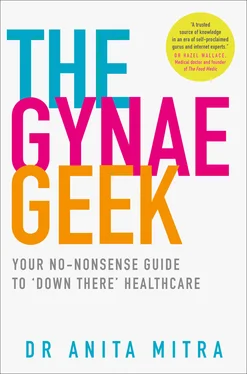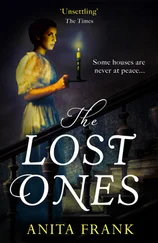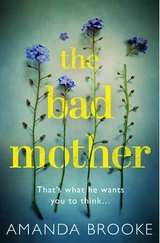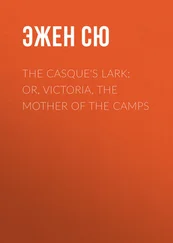As I wait to give the tranexamic acid time to work, I ask the patient – trying not to sound patronising – why she has never sought help for her heavy periods. She tells me she had come to think it was normal, and even a few years ago when she began to suspect it was not, she was too embarrassed to discuss it with friends or family, or to go and speak to her GP. As we talk, her bleeding slows down, and I arrange for her to be transferred to the gynaecology ward. She will be observed and receive a blood transfusion, though I have no idea at this point that she will need four units of blood.
Walking away from A&E, I can’t believe what I have just seen. And I realise I will never get over the shock I feel when patients drop this kind of bombshell; nor will I ever truly understand the extraordinary things some people accept as ‘normal’.
* * *
If you’re still with me, and are not feeling too queasy from my casual Wednesday-afternoon bloodbath, let me introduce myself. My name is Dr Anita Mitra, B.Sc., M.B.Ch.B., Ph.D. I’m a London-based doctor, qualified in 2011 and I’m now training to be a specialist in Obstetrics and Gynaecology (O&G). I have almost fifteen years of clinical and lab-based research experience under the belt of my oversized NHS tie-top scrubs. An interesting fact is that my surname is the Greek word for ‘uterus’ – although I’m not actually Greek, and I didn’t always want to be a gynaecologist.
Now sit tight if you’re ready to hear the somewhat off-piste route that led me to become the turmeric-latte loving, dead-lifting doctor who removes disco balls from ‘you-know-where’ for a living …
From the age of about three, I wanted to follow in my father’s footsteps and become a surgeon. But at seventeen, I was far too cool for school and, as a result, the only A grade I got in my A-levels was in German, which didn’t do much for any of the medical schools I’d applied to. I ended up talking my way into a place on a Medical Biochemistry course at the University of Leicester, after the admissions tutor told me my grades were ‘a bit lower’ than they’d normally accept. During my time reading Medical Biochemistry I worked in a research lab, studying the anticancer mechanisms of plant-based chemicals (which is essentially the scientific basis for the current turmeric latte trend). This was the first time I truly appreciated the impact of diet and lifestyle on our health. I worked my socks off during my undergraduate years and graduated three years later with a first-class degree and a place at Leicester Medical School.
For the first few years of medical school, I still desperately wanted to be a surgeon, and spent the third and fourth years doing research in my spare time with a professor of kidney-transplant surgery. However, in my fifth year, I had to do my placement in Obstetrics & Gynaecology. I have to admit I was partly terrified and partly bored by the idea of spending eight weeks in the speciality. However, those eight weeks changed my life. I loved the interaction with the patients, both young and old, the diseases fascinated me and the surgery was often bloody and dramatic, but usually with great outcomes, which I loved. Suddenly, I knew this was exactly what I wanted to do for the rest of my life.
I graduated from medical school in the summer of 2011 and spent my first two years working as a doctor in the East Midlands, completing the mandatory Foundation Programme, which involves basic training in six different specialties. My first job was, in fact, in Obstetrics & Gynaecology, and it flew by in an adrenaline-fuelled, placenta-splattered blur. I had found my calling. But it wasn’t plain sailing from there. I wanted to move to London and O&G training was very competitive at the time, with nine applicants for every job, and unfortunately, I didn’t get one. There is only one chance to apply annually, so I needed to find something else to do for a year. Many doctors work as locums, filling gaps on rotas for very good money, but I have never been driven by cash, and after my initial disappointment, I saw this year as an opportunity to enrich myself and my CV.
Failure always feeds my hunger, but I needed to ensure that failure was not an option with my next chance at a training job. So to cut a very long story short, I decided that I would still try and move to London and pursue my love of research for a year. To make this happen, my plan was to email every single professor of Obstetrics & Gynaecology in London and beg them for a research job. And it worked! I got a prestigious position at Imperial College, London, where I started doing a Ph.D. – the most incredible, but challenging thing I’ve ever done. And during that time, I managed to bag myself one of those sought-after training jobs.
As much as I thrive on the thrill of operating and the honour of being able to help women bring their babies into the world, the thing I love most about my job is the chance to sit down with them to answer their questions about gynaecological health and calm their anxieties. Many concerns often stem from lack of knowledge and understanding of what is ‘normal’ – because very few women feel it is safe to talk about a topic shrouded in taboos and shame. While there is so much general health information available online, there is relatively little engaging and reliable material about female health. There are also lots of unqualified people selling their opinions as medical fact. I began to see the conversation opening up on social media, but when I looked closer it filled me with horror. Film stars talking about vaginal steaming, beauty bloggers talking about vaginal facials, wellness coaches telling women they had successfully ‘detoxed their body’ because their vegan diet had stopped their periods, as well as other unqualified people pushing products that women simply don’t need. But where were all the doctors?
Women drink in this information, unable to decide for themselves whether it is actually credible or evidence-based, distracted by the huge numbers of followers these ‘experts’ have and the glossy façade of the online world.
I saw the need for a sensible voice in this unregulated chaos, so I started an online blog and Instagram account called ‘Gynae Geek’. The positive response was overwhelming. I began to receive huge numbers of comments and messages from women desperate to know more, and I get a particular thrill from seeing them tagging their friends in my posts for them to read.
I realise that I am in a privileged position, with over fifteen years of scientific and clinical training that have given me the ability to seek out information and decide whether it is credible or not. This is one of the reasons that I back up most posts with references to scientific studies – to prove to my followers that what I’m providing them with is reliable information and not just my opinion. It is also why I use the word ‘geek’: I want women to realise that knowledge is sexy, knowledge is power and that they should never be afraid to ask: ‘Why?’ and ‘How?’
So, what is this book about?
This is not your average healthcare book. While it’s full of medical and scientific facts, it’s also a collection of tales from the thousands of patients I’ve treated, who inspired many of the topics in the book. It is a back-to-basics guide to gynaecological health, covering what’s normal and what’s not. It’s sensible, no-nonsense and, most of all, evidence-based. Some parts might make you blush, others make you laugh and some might even make you exclaim, ‘Oh my gosh, that’s me!’ But it’s not intended for self-diagnosis, nor as an alternative to visiting a doctor in real life. Rather, it is designed to help you to decide whether or not you need to go and talk to a healthcare professional about something that’s bothering you.
Читать дальше












